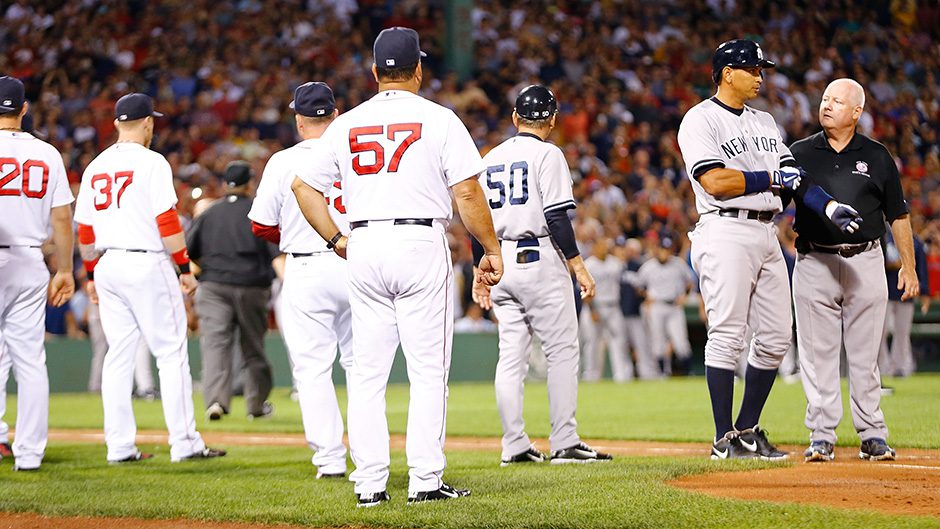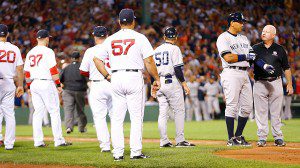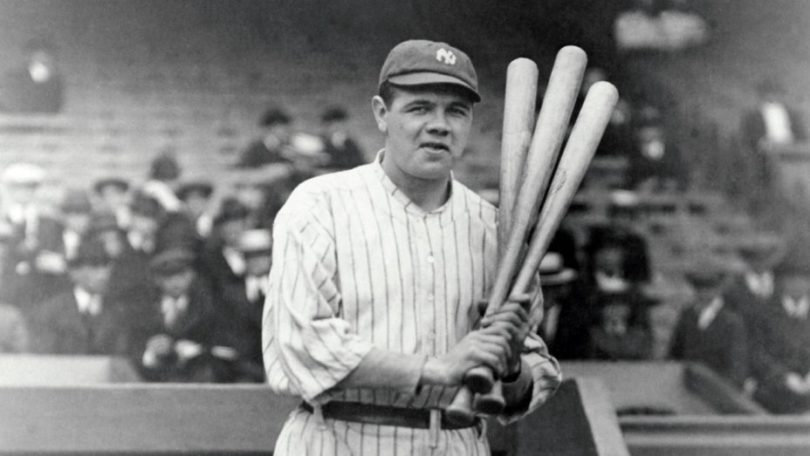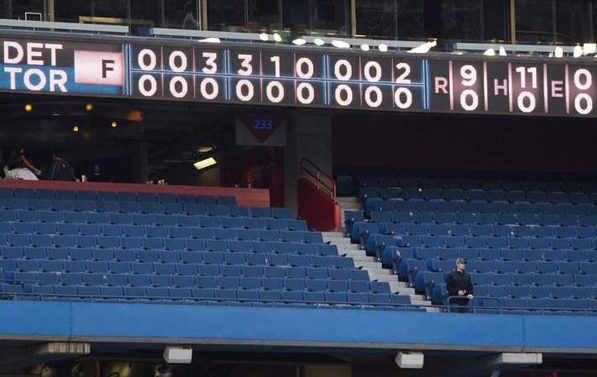

Let me first get this out of the way: I’m neither an A-Rod fan nor an A-Rod apologist. I never really liked him, and have liked him less and less over the years. I think he’s disingenuous and annoying. I think that while the idea of “clutch” vs. “not clutch” is overused, he has generally earned his reputation as a great player who becomes less great when the pressure’s on. He’s also made a lot of “foot-in-mouth” comments of the sort that have made me like him even less.
But seriously: He’s not Whitey Bulger (seriously, Bill Madden?). He also didn’t invent cheating in baseball, despite the preposterous implications of many. Let’s not forget that baseball, according to more than one source, has been rife with corner-cutting for a long time, and remains that way.
Sign-stealing was common for decades, and people dismissed it as “part of the game.” How about pitchers scuffing baseballs to get them to move in ways that increased their advantage over hitters? If that’s not cheating, nothing is. Joe Niekro was caught on live TV with an emery board flying out of his glove as he tried to surreptitiously discard it, and he’s not decried as an enemy of the game! Many of the pitchers of the 1970s were known for throwing spitballs and scuffballs (even though the spitball was actually outlawed before World War II), but they aren’t accused of being the greatest evil ever to poison the game. Gaylord Perry was a notorious spitballer, and he doesn’t get the A-Rod treatment, despite writing a book called — wait for it — Me and the Spitter!
Let’s get to another topic I’ve addressed before: amphetamines, which are still among the most cheap and reliable performance-enhancers you can find. How many records of the 1960s, ’70s and ’80s were set by players who popped “greenies” like candy?
Another thing that contradicts the “baseball used to be pure” argument is the disgraceful manner in which Ryan Dempster showed his displeasure with A-Rod in Sunday’s game at Fenway. Dempster threw at A-Rod multiple times in his first at-bat (including throwing behind him), finally drilling him in the shoulder and causing the benches to empty. Guess who was ejected? Not Dempster, but Joe Girardi, who was understandably apoplectic that Dempster was allowed to stay in the game (the benches were warned, of course).
To all the folks who decry the demise of baseball’s purity, and lament the example “cheaters” are setting for our kids, I would ask this: Do we really want our kids emulating Dempster’s actions? Do we really want them thinking it’s okay to throw a baseball at a defenseless human being because he thinks he’s “cheated the game”? How about throwing baseballs at people for watching a home run for an extra second and a half? I could go on and on about what a disgrace beanballing is, but I’ve touched on that before, too. Last but not least, even though he was on the side of the initially aggrieved party, Girardi yelled “somebody’s getting hit” as he walked off the field, announcing his intention to retaliate. As pitchers don’t have to stand at the plate in the American League, this kind of thing often means that someone other than the offending party will have his health risked for no good reason, because of a practice that is widely considered “part of baseball.” A far less than honorable thing for our kids to emulate or the fans to support.
Despite all of the evidence to the contrary, people want to act like A-Rod is responsible for the soiling of the game. Meanwhile, Bud Selig is more than happy to whitewash his league’s reputation by turning an easy mark into a public enemy. Meanwhile, Brian Cashman is more than happy to whitewash an enormous player contract while throwing said public enemy to the wolves. Meanwhile, the league that, when people first wondered about the unusual spike in power numbers, answered by building smaller ballparks and turning career .260 hitters into its favorite sons, is more than happy to whitewash its public image with a few noisy scandals.
I’ve said it before, and I’ll say it again: I don’t advocate the use of dangerous performance enhancers, nor do I advocate rampant corner-cutting to boost numbers. But to mythologize baseball’s pre-steroid past as squeaky clean, or to propose that A-Rod and a small handful of players are the engineers of baseball’s ruin, is simplistic and an impediment to the true evolution of the game. Baseball is a wonderful sport, but it’s never been perfect, and it’s never been all that clean.





